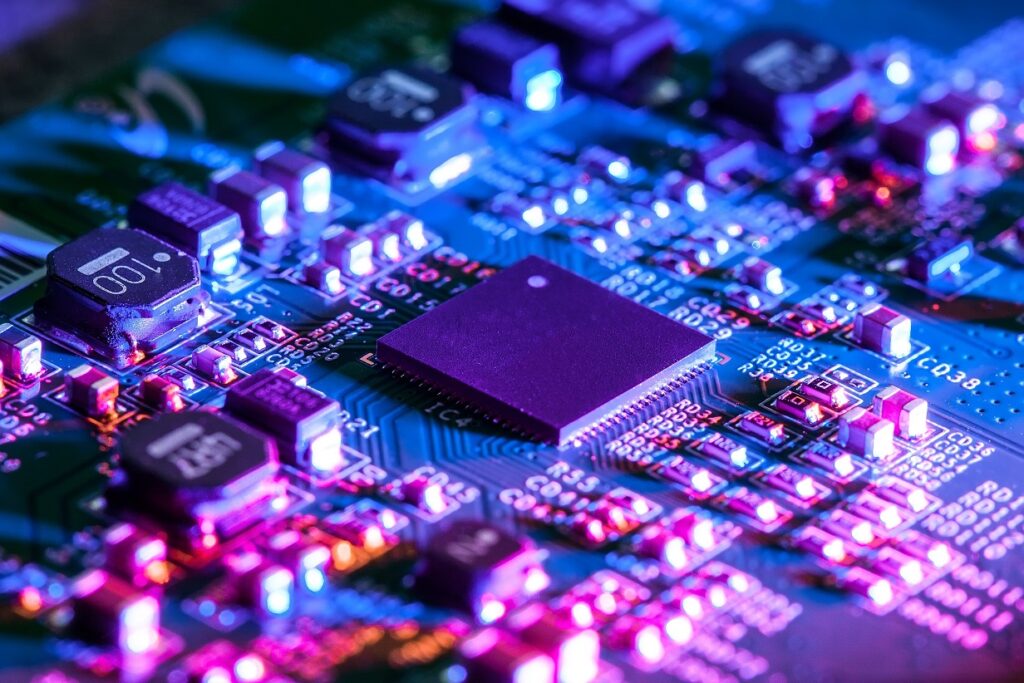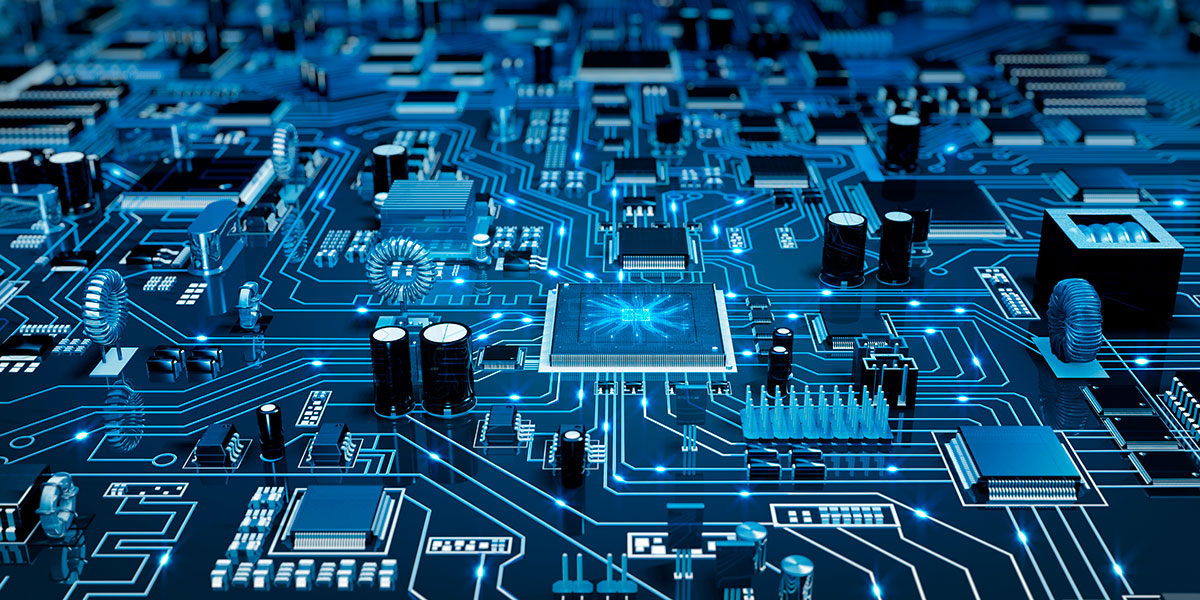Introduction
In today’s fast-paced world, play an indispensable role in shaping our lives. From the smartphones we carry in our pockets to the complex machinery that powers industries, are the unsung heroes of the modern age. In this article, we’ll embark on a fascinating journey through the world of, exploring their history, impact, and promising future.

Table of Contents
- The Birth of Electronics: A Historical Perspective
- Early Discoveries
- Invention of the Transistor
- The Digital Revolution
- The Wonders of Miniaturization: Integrated Circuits
- From Vacuum Tubes to ICs
- Moore’s Law and Shrinking Electronics
- Electronics in Everyday Life
- Smartphones and Communication
- Home Appliances and Automation
- Entertainment Gadgets
- Electronics in Medicine and Healthcare
- Medical Imaging
- Lifesaving Devices
- Telemedicine
- Electronics in Industry and Manufacturing
- Automation and Robotics
- Quality Control
- Supply Chain Management
- The Green Side of Electronics: Sustainable Technologies
- Energy Efficiency
- E-Waste Management
- The Future of Electronics: Emerging Trends
- Artificial Intelligence and Machine Learning
- Quantum Computing
- Internet of Things (IoT)
- Challenges and Ethical Considerations
- Privacy Concerns
- Environmental Impact
- Cybersecurity
- Conclusion: A Bright Electronic FutureOur world is intricately intertwined with the marvels of electronics. From enhancing our daily lives to driving scientific advancements, the impact of electronics is immeasurable. As we move forward, it’s crucial to address the challenges while harnessing the immense potential these technologies offer.
The Birth of Electronics: A Historical Perspective
Early Discoveries
The journey of Electronics begins with a series of groundbreaking discoveries in the late 19th and early 20th centuries. Scientists like Michael Faraday and James Clerk Maxwell paved the way by unraveling the mysteries of electricity and magnetism. Their work laid the foundation for the development of electronic devices.
Invention of the Transistor
One of the most significant milestones in was the invention of the transistor in 1947 by John Bardeen, Walter Brattain, and William Shockley. This tiny semiconductor device revolutionized the field, making it possible to create smaller, more efficient electronic components.
The Digital Revolution
The latter half of the 20th century witnessed the digital revolution, with the advent of microprocessors and integrated circuits. These innovations led to the creation of computers and paved the way for the Information Age.
The Wonders of Miniaturization: Integrated Circuits
From Vacuum Tubes to ICs
Before integrated circuits (ICs), electronic devices relied on bulky vacuum tubes. The development of ICs allowed for the miniaturization of , making them more portable and accessible.
Moore’s Law and Shrinking Electronics
Gordon Moore’s famous observation, known as Moore’s Law, predicted that the number of transistors on a microchip would double approximately every two years. This exponential growth in computing power continues to drive innovation and change the way we live and work.
Electronics in Everyday Life
Smartphones and Communication
Smartphones are perhaps the most ubiquitous electronic devices today. They not only connect us with the world but also serve as personal assistants, cameras, and entertainment hubs.
Home Appliances and Automation
The integration of electronics into home appliances has transformed the way we manage household tasks. From smart thermostats to voice-activated assistants, automation has made our lives more convenient.
Entertainment Gadgets
Electronics have redefined entertainment. High-definition televisions, gaming consoles, and virtual reality headsets provide immersive experiences that were once the stuff of science fiction.
Electronics in Medicine and Healthcare
Medical Imaging
Electronic technologies have revolutionized medical diagnosis and treatment. Imaging techniques like MRI and CT scans provide detailed insights into the human body, aiding in disease detection and monitoring.
Lifesaving Devices
Devices such as pacemakers and insulin pumps rely on electronics to save lives. They ensure precise delivery of medical interventions, improving the quality of life for millions.
Telemedicine
The recent surge in telemedicine relies heavily on electronics. Remote consultations and diagnostics have become increasingly accessible, bridging geographical gaps in healthcare.
Electronics in Industry and Manufacturing
Automation and Robotics
Industries rely on automation and robotics to streamline processes and increase efficiency. These electronic systems reduce human error and enhance productivity.
Quality Control
Electronics play a critical role in quality control, ensuring that products meet strict standards. Sensors and monitoring devices provide real-time data for immediate adjustments.
Supply Chain Management
Tracking and managing the supply chain efficiently are essential for businesses. Electronic systems enable real-time tracking, reducing costs and improving delivery times.
The Green Side of Electronics: Sustainable Technologies
Energy Efficiency
Efforts to reduce energy consumption in electronics are ongoing. Energy-efficient devices and renewable energy sources are helping to mitigate the environmental impact.
E-Waste Management
The disposal of electronic waste is a global concern. Recycling programs and sustainable practices are essential to minimize the negative effects of e-waste on the environment.
The Future of Electronics: Emerging Trends
Artificial Intelligence and Machine Learning
AI and machine learning are poised to transform industries from healthcare to finance. Electronics provide the computational power needed to make these advancements possible.
Quantum Computing
Quantum computers promise to revolutionize computing by solving complex problems at unprecedented speeds. Electronics at the quantum level open doors to new frontiers of technology.
Internet of Things (IoT)
The IoT connects everyday objects to the internet, allowing them to communicate and share data. This interconnectedness is reshaping industries and improving efficiency.
Challenges and Ethical Considerations
Privacy Concerns
As electronics become more integrated into our lives, issues of data privacy and security become increasingly important. Safeguarding personal information is a growing challenge.
Environmental Impact
The production and disposal of electronics have environmental consequences. Sustainable practices and responsible consumption are vital to mitigate these effects.
Cybersecurity
With increased connectivity comes a greater risk of cyber threats. Protecting electronic systems from hackers and ensuring data security are paramount.
Conclusion: A Bright Electronic Future
The world of electronics is ever-evolving, offering endless possibilities and challenges. As we move forward, we must harness the power of electronics for the greater good while addressing the ethical and environmental concerns they raise.
FAQs
- What is the significance of Moore’s Law in electronics? Moore’s Law predicts the rapid advancement of electronics by stating that the number of transistors on a microchip doubles approximately every two years. This exponential growth drives the development of smaller and more powerful electronic devices.
- How do electronics contribute to sustainability? Electronics can contribute to sustainability through energy-efficient designs, renewable energy technologies, and e-waste management practices that reduce their environmental impact.
- What is the Internet of Things (IoT), and how does it work? The Internet of Things (IoT) is a network of interconnected devices that can communicate and share data with each other over the internet. This interconnectedness enables automation, data analysis, and improved efficiency in various applications.
- What are the main challenges in ensuring cybersecurity for electronic systems? Cybersecurity challenges for electronic systems include protecting against hacking, data breaches, and ensuring the privacy and security of sensitive information in an increasingly connected world.
- How can individuals contribute to responsible electronics consumption? Individuals can contribute to responsible electronics consumption by recycling old devices, reducing electronic waste, and supporting eco-friendly product choices that prioritize sustainability.
Introduction
In today’s fast-paced world, electronics play an indispensable role in shaping our lives. From the smartphones we carry in our pockets to the complex machinery that powers industries, electronics are the unsung heroes of the modern age. In this article, we’ll embark on a fascinating journey through the world of electronics, exploring their history, impact, and promising future.
Table of Contents
The Birth of Electronics: A Historical Perspective
Early Discoveries
The journey of electronics begins with a series of groundbreaking discoveries in the late 19th and early 20th centuries. Scientists like Michael Faraday and James Clerk Maxwell paved the way by unraveling the mysteries of electricity and magnetism. Their work laid the foundation for the development of electronic devices.
Invention of the Transistor
One of the most significant milestones in electronics was the invention of the transistor in 1947 by John Bardeen, Walter Brattain, and William Shockley. This tiny semiconductor device revolutionized the field, making it possible to create smaller, more efficient electronic components.
The Digital Revolution
The latter half of the 20th century witnessed the digital revolution, with the advent of microprocessors and integrated circuits. These innovations led to the creation of computers and paved the way for the Information Age.
The Wonders of Miniaturization: Integrated Circuits
From Vacuum Tubes to ICs
Before integrated circuits (ICs), electronic devices relied on bulky vacuum tubes. The development of ICs allowed for the miniaturization of electronics, making them more portable and accessible.
Moore’s Law and Shrinking Electronics
Gordon Moore’s famous observation, known as Moore’s Law, predicted that the number of transistors on a microchip would double approximately every two years. This exponential growth in computing power continues to drive innovation and change the way we live and work.
Electronics in Everyday Life
Smartphones and Communication
Smartphones are perhaps the most ubiquitous electronic devices today. They not only connect us with the world but also serve as personal assistants, cameras, and entertainment hubs.
Home Appliances and Automation
The integration of electronics into home appliances has transformed the way we manage household tasks. From smart thermostats to voice-activated assistants, automation has made our lives more convenient.
Entertainment Gadgets
Electronics have redefined entertainment. High-definition televisions, gaming consoles, and virtual reality headsets provide immersive experiences that were once the stuff of science fiction.
Electronics in Medicine and Healthcare
Medical Imaging
Electronic technologies have revolutionized medical diagnosis and treatment. Imaging techniques like MRI and CT scans provide detailed insights into the human body, aiding in disease detection and monitoring.
Lifesaving Devices
Devices such as pacemakers and insulin pumps rely on electronics to save lives. They ensure precise delivery of medical interventions, improving the quality of life for millions.
Telemedicine
The recent surge in telemedicine relies heavily on electronics. Remote consultations and diagnostics have become increasingly accessible, bridging geographical gaps in healthcare.
Electronics in Industry and Manufacturing
Automation and Robotics
Industries rely on automation and robotics to streamline processes and increase efficiency. These electronic systems reduce human error and enhance productivity.
Quality Control
Electronics play a critical role in quality control, ensuring that products meet strict standards. Sensors and monitoring devices provide real-time data for immediate adjustments.
Supply Chain Management
Tracking and managing the supply chain efficiently are essential for businesses. Electronic systems enable real-time tracking, reducing costs and improving delivery times.
The Green Side of Electronics: Sustainable Technologies
Energy Efficiency
Efforts to reduce energy consumption in electronics are ongoing. Energy-efficient devices and renewable energy sources are helping to mitigate the environmental impact.
E-Waste Management
The disposal of electronic waste is a global concern. Recycling programs and sustainable practices are essential to minimize the negative effects of e-waste on the environment.
The Future of Electronics: Emerging Trends
Artificial Intelligence and Machine Learning
AI and machine learning are poised to transform industries from healthcare to finance. Electronics provide the computational power needed to make these advancements possible.
Quantum Computing
Quantum computers promise to revolutionize computing by solving complex problems at unprecedented speeds. Electronics at the quantum level open doors to new frontiers of technology.
Internet of Things (IoT)
The IoT connects everyday objects to the internet, allowing them to communicate and share data. This interconnectedness is reshaping industries and improving efficiency.
Challenges and Ethical Considerations
Privacy Concerns
As electronics become more integrated into our lives, issues of data privacy and security become increasingly important. Safeguarding personal information is a growing challenge.
Environmental Impact
The production and disposal of electronics have environmental consequences. Sustainable practices and responsible consumption are vital to mitigate these effects.
Cybersecurity
With increased connectivity comes a greater risk of cyber threats. Protecting electronic systems from hackers and ensuring data security are paramount.
Conclusion: A Bright Electronic Future
The world of electronics is ever-evolving, offering endless possibilities and challenges. As we move forward, we must harness the power of electronics for the greater good while addressing the ethical and environmental concerns they raise.
FAQs
- What is the significance of Moore’s Law in electronics? Moore’s Law predicts the rapid advancement of electronics by stating that the number of transistors on a microchip doubles approximately every two years. This exponential growth drives the development of smaller and more powerful electronic devices.
- How do electronics contribute to sustainability? Electronics can contribute to sustainability through energy-efficient designs, renewable energy technologies, and e-waste management practices that reduce their environmental impact.
- What is the Internet of Things (IoT), and how does it work? The Internet of Things (IoT) is a network of interconnected devices that can communicate and share data with each other over the internet. This interconnectedness enables automation, data analysis, and improved efficiency in various applications.
- What are the main challenges in ensuring cybersecurity for electronic systems? Cybersecurity challenges for electronic systems include protecting against hacking, data breaches, and ensuring the privacy and security of sensitive information in an increasingly connected world.
- How can individuals contribute to responsible electronics consumption? Individuals can contribute to responsible electronics consumption by recycling old devices, reducing electronic waste, and supporting eco-friendly product choices that prioritize sustainability.

